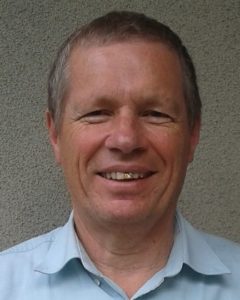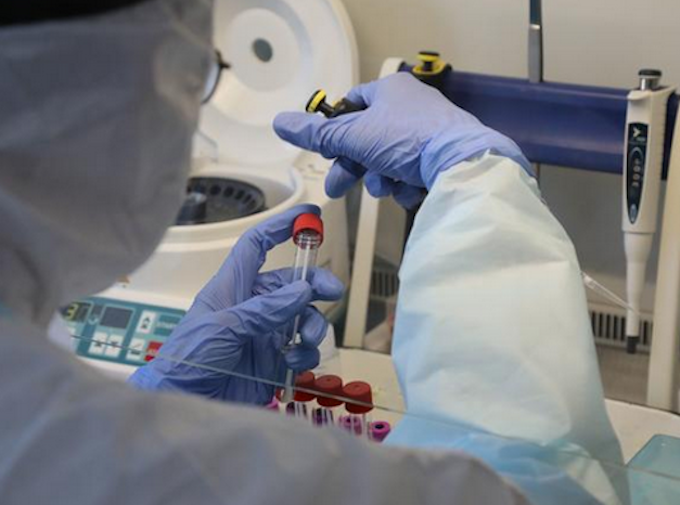Essay by Keith Rankin.
New Zealand is under siege from Covid19. We can learn some things from medieval city sieges.

A traditional siege takes place in a fortress, and the besieging agent waits outside the wall or the moat. The defenders also waited, in a battle of attrition; they won if the besieging attackers went away of their own accord (military besiegers were in a sense also under siege, when their own supply lines were weak), or the besiegers were attacked by a third party (eg the cavalry of an allied principality). Waiting was the ‘elimination strategy’.
If there is no prospect that the besieger will go away, and there is no likelihood of rescue from an allied cavalry force, then you – the besieged – are going to have to confront your enemy. The best way to do this successfully is to:
· choose the date and place of the coming battle
· prepare for the battle by being at maximum fitness
We note that high performance athletes prepare for (ie train for) their battles so that they peak on the chosen date or dates. In the military sense, to be a successful defender, you must be prepared to mount the best possible defence.
Choosing the Date and Time for Battle
Covid – the ‘enemy’ – is at maximum strength in winter, and also has a second maximum in hot summer. These are times when people spend much of their time indoors, in poorly ventilated or air-conditioned environments.
The burghers of Adelaide (South Australia) – which gets very hot in summer – should be choosing October and November of this year, for their battle; indeed they have a moatless border to defend. Cooler New Zealander should be choosing January and February 2022. This would indeed match the July and August 2021 dates of the battle fought in England and Europe. While the jury is still out on whether England’s battle has been won (or maybe drawn), Denmark has declared victory; likewise, Sweden seems to have won its battle. Victory means that the virus has become endemic. While Sweden continues to record 1,000 new ‘delta’ cases per day, its last day with more than one death was 25 August.
For New Zealand, including Auckland, to break out of its siege (and siege mentality) in time for these optimal months, New Zealand needs to open up to normal international travel (albeit with arriving travellers having vaccine passports, and rapid saliva tests) after the New Year holiday weekend. [I remember those days of having vaccination ‘passports’ for smallpox and yellow fever; indeed, when visiting Madagascar in 1978 (arriving from Tanzania in Africa) I had to report to a government health clinic in Antananarivo on day 3.]
It means that all domestic quarantines for Covid19 should end on or (preferably) before the beginning of December. (Other limited and local restrictions may still apply, but only as indicated by wastewater testing.) Further, it is essential that the relevant dates be announced this month, so that New Zealanders can make their own plans for a summer without siege. (Those of us with a fearful mindset may of course choose to take a summer ‘staycation’ as a way of using annual leave.)
Most of us know about ‘mission creep’; we just remind ourselves about the extended western military interventions in Iraq and Afghanistan. ‘Lockdown creep’ is a bit similar. Once in a siege mindset, we find it very hard to let go.
Preparing for Battle
As renowned British television doctor Michael Mosley suggested in The Listener (‘Defeating the Viral Enemy’, 24 July 2021), “tweak your health to reduce the risk of getting seriously ill from Covid”. We need to be ‘fighting fit’ when the necessary opening-up takes place.
The first and most important measure that we can take to boost our ‘host fitness’ is to get fully vaccinated. And there should be no government vacillation around vaccination. By the end of November, every New Zealander over 12 should have been offered a vaccination, and every person who has not had a vaccination in the preceding six months should be classed as ‘unvaccinated’. (I would regard myself as unvaccinated from influenza if, in any year, I miss out on my annual influenza immunisation.)
The second is to recognise that we get vaccinated in order to free ourselves from Covid’s siege. It’s a waste of vaccination resources to vaccinate people and then force them to stay at home for months on end. So it should not be ‘vaccinate and stay at home’; and, it should not be ‘vaccinate and wear a mask’. Rather, it should be ‘maintain vaccination status or wear a mask’. Most people reluctant to get vaccines are even more reluctant to wear facemasks; let them choose, and reward those who do the right thing. When we fight for freedom, we should be rewarded with freedom. Face covers are oppressive, especially but not only in a secular culture.
The second component of our preparation for battle is to open ourselves to the day-to-day acceptable risks of common colds and even (for young people) influenza. (After all, it was only people aged over 65 who were expected to get influenza immunisation; the rest were expected to maintain immunity through regular exposure to seasonal viruses.) The ideal timing for this ‘fitness-exposure’ is spring and early summer. It means that New Zealanders not subject to quarantines should be actively discouraged from wearing facemasks. (We can think of this process of living normal lives in the community as priming ourselves – in the pub, on the bus, on the beach, in the gym – for the coming unavoidable confrontation.) Facemasks, as well as being oppressive, impede rather than facilitate our preparation for the ‘battle’ ahead.
We need to recognise that, for most of us, natural immunity has always been a complement to immunity by vaccination. This principle still applies. Indeed, it would appear that the most-immune people in Europe (and elsewhere) are those who have been both vaccinated against the virus and exposed to the virus. In Aotearoa in January and February, we will need as many people as possible to have been immunised against Covid, by vaccination and with some help from nature, in the preceding months.
The third component of our preparation for battle in the New Year is to eat good healthy foods that support rather than inhibit immune system responses. Thus, it is time to promote, for example, fresh vegetables and fruit, through subsidies and delivery programs; and by allowing greengrocers to stay open during quarantines. Further, it is time to apply substantial disincentives to the consumption of ‘junk foods’ which promote obesity and other comorbidities.
Additionally, people should be encouraged to stock up on Vitamin C supplements, and to take extra Vitamin C from the beginning of 2022 until, at least, the end of winter. I know some public health professionals disapprove of Vitamin C supplementation. But this is a time that the anti-vitamin brigade should keep quiet, and allow the ‘abundance of caution’ principle to prevail; the potential for good from Vitamin C is substantial (albeit disputed), while the health risks of excess Vitamin C are very small. Vitamin C can indeed be part of our preparation for the siege-breaking ‘battle’ ahead.
When does a Pandemic End?
Last week I read the following article, in Practical Ethics: The end of the COVID-19 Pandemic, by Alberto Giubilini and Erica Charters, both from Oxford University. They start: “it is not clear what it means to be in the middle of a pandemic if we don’t know what it means for a pandemic to end”. They continue: “the end of an epidemic is not determined by epidemiological factors alone. Historically, epidemics end not with the end of the disease, but with the disease becoming endemic”.
Among other things the authors discuss the apparent disappearance of SARS (Covid03). And they note that, disappearance is no longer an option for Covid19. (I would argue that elimination could have been a global option back in February 2020, but that poor policymaking in the European Union in that month ensured that this particular Covid genie could never ever be put back into the bottle.)
Giubilini and Charters continue: “A disease is endemic when disease rates are reduced to ‘a locally acceptable level’ and the disease becomes manageable. However, what level is considered manageable and acceptable, particularly for a new disease, is not defined by epidemiology. … There might well be a day in which the WHO declares the pandemic is over. … But that type of announcement will likely not mark the actual end of the pandemic for most. For some – those who have resumed normal life — the pandemic will have already ended. For others, the pandemic will continue not only through the effects of Covid19 related illness, but also through economic hardship, political instability, social dislocation, and non-Covid related health problems that restrictions imply. … Discussions [considering the end of a pandemic] should include input from those who specialise in understanding society, culture, and politics. Such discussions will necessarily involve articulating social priorities and cultural values, and calculating risks and benefits, alongside epidemiological data. Such discussions must therefore involve experts beyond the fields of medicine – ethicists, philosophers, and historians, as well as anthropologists, sociologists, economists, and political scientists. … Even as the virus keeps circulating and recirculating.”
I would add that such discussions should also involve people other than academic ‘experts’. Democracy works in large part because discussions are not confined to politicians and tohunga.
Has the HIV/AIDs pandemic ended? The answer will vary, depending on who you talk to. Likewise, the 1918 influenza pandemic. Certainly, variants of the H1N1 influenza virus continue to circulate. And numbers of deaths (up to 500 per year) were attributed to influenza, and another similar number to road traffic crashes; all these deaths, while lamented, were acceptable in terms of our previously accepted balancing of risk.
Who stands to benefit most by arguing for the perpetuation of restrictions, such as indefinite facemask mandates and compulsory record-keeping? Certainly, I suspect, not the communities who have been most victimised by the Covid19 pandemic. ‘Rogernomics’ in the 1980s put economist technocrats – true believers – at centre-stage, and the more their policy recommendations fell short, the more politicians and journalists sought advice from them. They enjoyed the spotlight. Is there a parallel today, in public health?
Conclusion
Let’s choose to break the Siege of Covid19, in the New Year of 2022. We need to prepare. And we need to understand that success in this ‘battle’ will be something less than ‘total victory’; rather, it will be an assimilation of sorts.
————-
Keith Rankin (keith at rankin dot nz), trained as an economic historian, is a retired lecturer in Economics and Statistics. He lives in Auckland, New Zealand.










